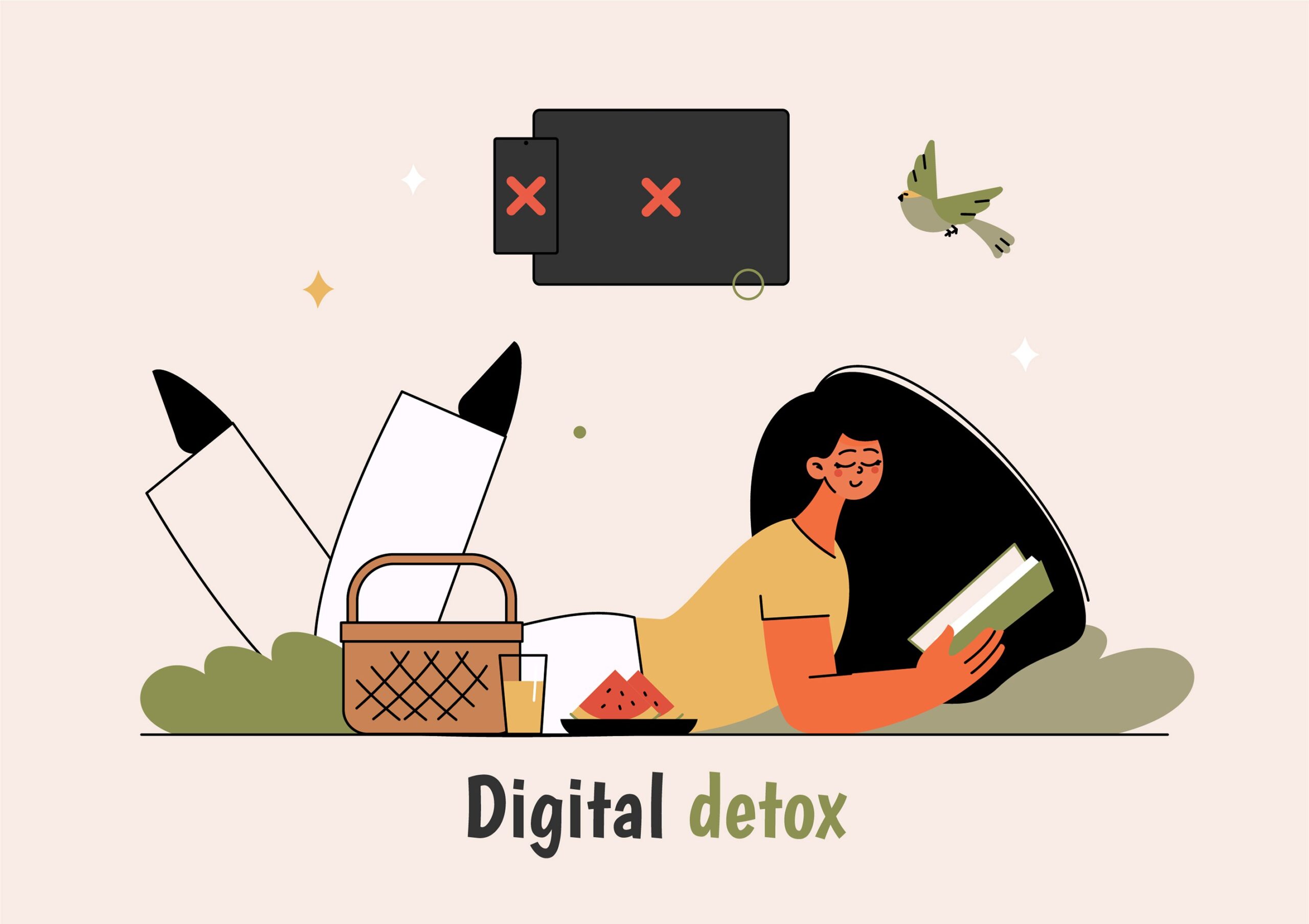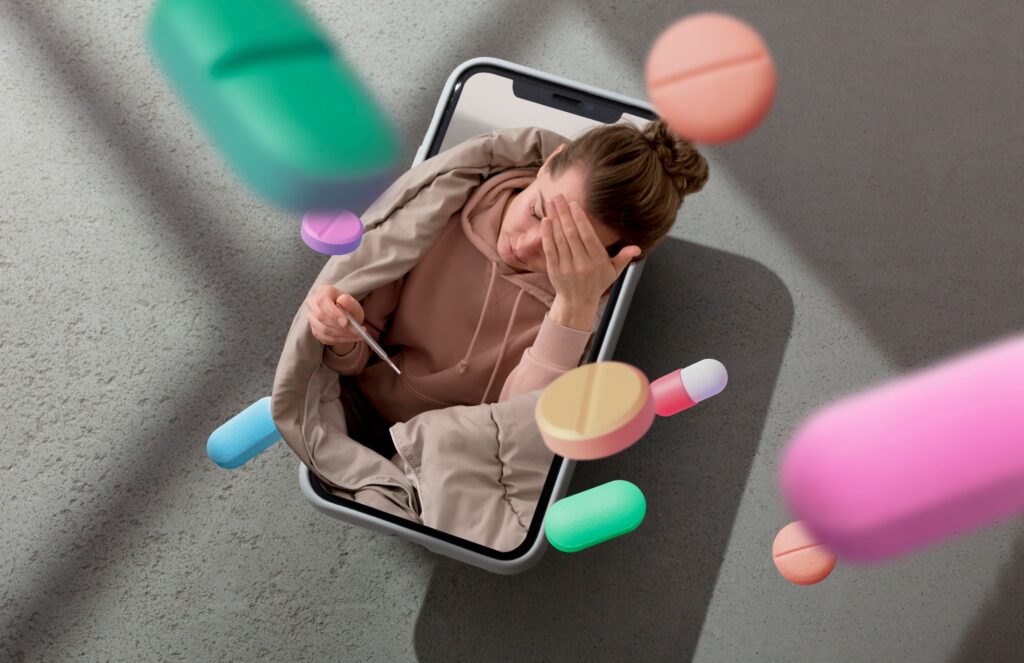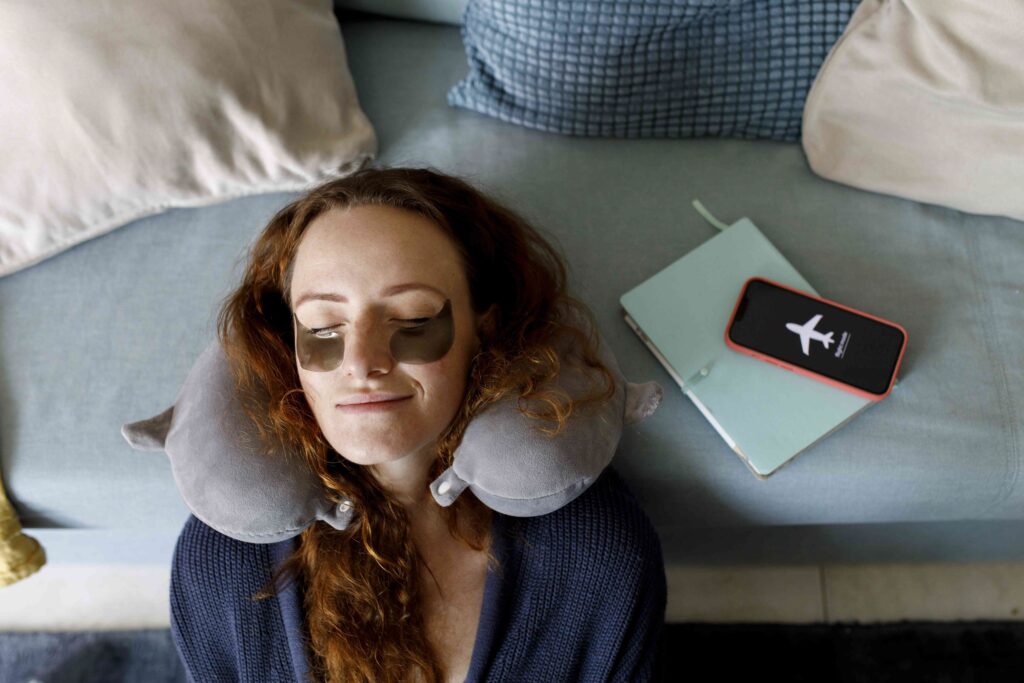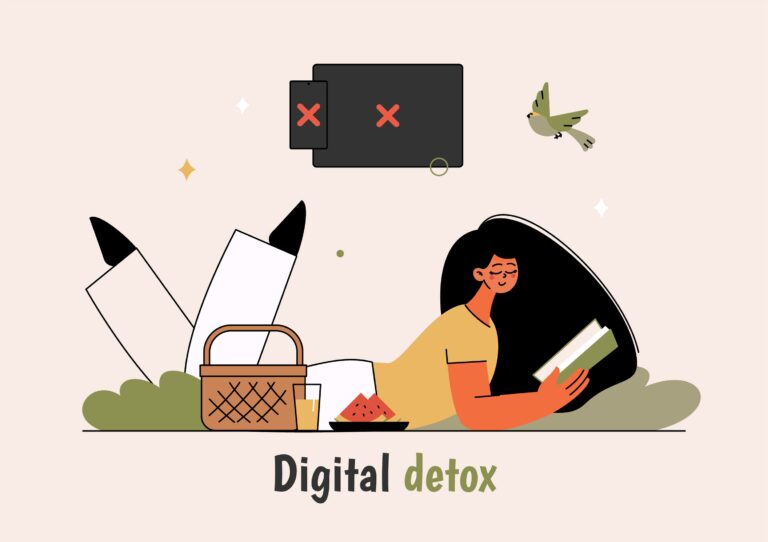
In 2025, the average person spends over 7 hours daily on digital devices — smartphones, laptops, tablets, and TVs combined. According to eMarketer’s 2024 Digital Report, global digital media time has increased by 12% in the last two years alone. While technology keeps us connected and informed, excessive screen time is contributing to a global rise in mental health issues like anxiety, depression, and burnout.
That’s why digital detox has become a vital practice for maintaining mental well-being in our digital age. This blog will explain what a digital detox is, why it matters more than ever, and practical tips to start your own screen-free journey.
What is a Digital Detox?
A digital detox means intentionally stepping away from digital devices and online platforms for a certain period — whether that’s a few hours each day or a weekend without screens. The goal? To reduce stress, improve focus, and reconnect with the real world.
Why You Need a Digital Detox in 2025

A study by the American Psychological Association (APA) in 2024 reveals that adults who spend more than 6 hours per day on screens are 35% more likely to experience symptoms of anxiety and depression. Meanwhile, the World Health Organization (WHO) highlights how excessive screen time interferes with sleep quality and increases social isolation — two key factors affecting mental health.
More alarmingly, a 2023 global survey by Statista shows that youth aged 18-24 spend an average of 9 hours daily online, intensifying the risk of digital burnout among younger generations.
The Mental Health Benefits of a Digital Detox

Taking breaks from screens offers several benefits:
- Lower stress: Constant notifications and social media overload increase cortisol (stress hormone) levels. A detox helps calm your nervous system.
- Improved sleep: Blue light from screens suppresses melatonin production, making it harder to fall asleep. Disconnecting before bed helps restore your natural sleep cycle.
- Better focus and productivity: Less digital distraction means you can concentrate more deeply on your tasks and hobbies.
- Enhanced mood: Stepping away from negative news and social comparison boosts your emotional well-being.
- Stronger relationships: More face-to-face time improves connections with family and friends.
How to Start Your Digital Detox: Simple Tips That Work.

- Set clear boundaries: Choose specific times during the day when you won’t use digital devices (e.g., no screens after 8 pm).
- Use screen time apps: Tools like Apple’s Screen Time and Google’s Digital Wellbeing help track and limit usage.
- Create tech-free zones: Keep devices out of the bedroom or dining room to encourage real-world interaction.
- Replace screen time with offline hobbies: Reading, walking, cooking, or meditation are great options.
- Inform your network: Let friends and colleagues know you’re unplugging so they don’t expect instant replies.
Why Digital Detox Will Define Wellness in 2025 and Beyond
As remote work and online education become permanent fixtures, mental health experts emphasize digital detox as a crucial part of wellness. According to Dr. Roshan Roberts, a leading neuroscientist:
“Digital detoxes allow the brain to rest and reset from constant digital stimuli, which is essential to maintaining cognitive health and emotional balance.”
Schools and workplaces globally are now adopting digital wellbeing programs to help students and employees manage screen time and reduce digital fatigue.
Final Thoughts
In 2025, taking a digital detox isn’t just a trendy challenge — it’s a vital practice for protecting your mental health and living a balanced life. Even small daily breaks can help you feel more present, calm, and focused.
Ready to unplug and recharge? Start small, stay consistent, and watch your mental health flourish.



Pingback: Health Anxiety Caused by Wearable Fitness Trackers: A Hidden Risk in the Age of Smart Health - Manivablog – Trending Tips on Travel, Finance & Health